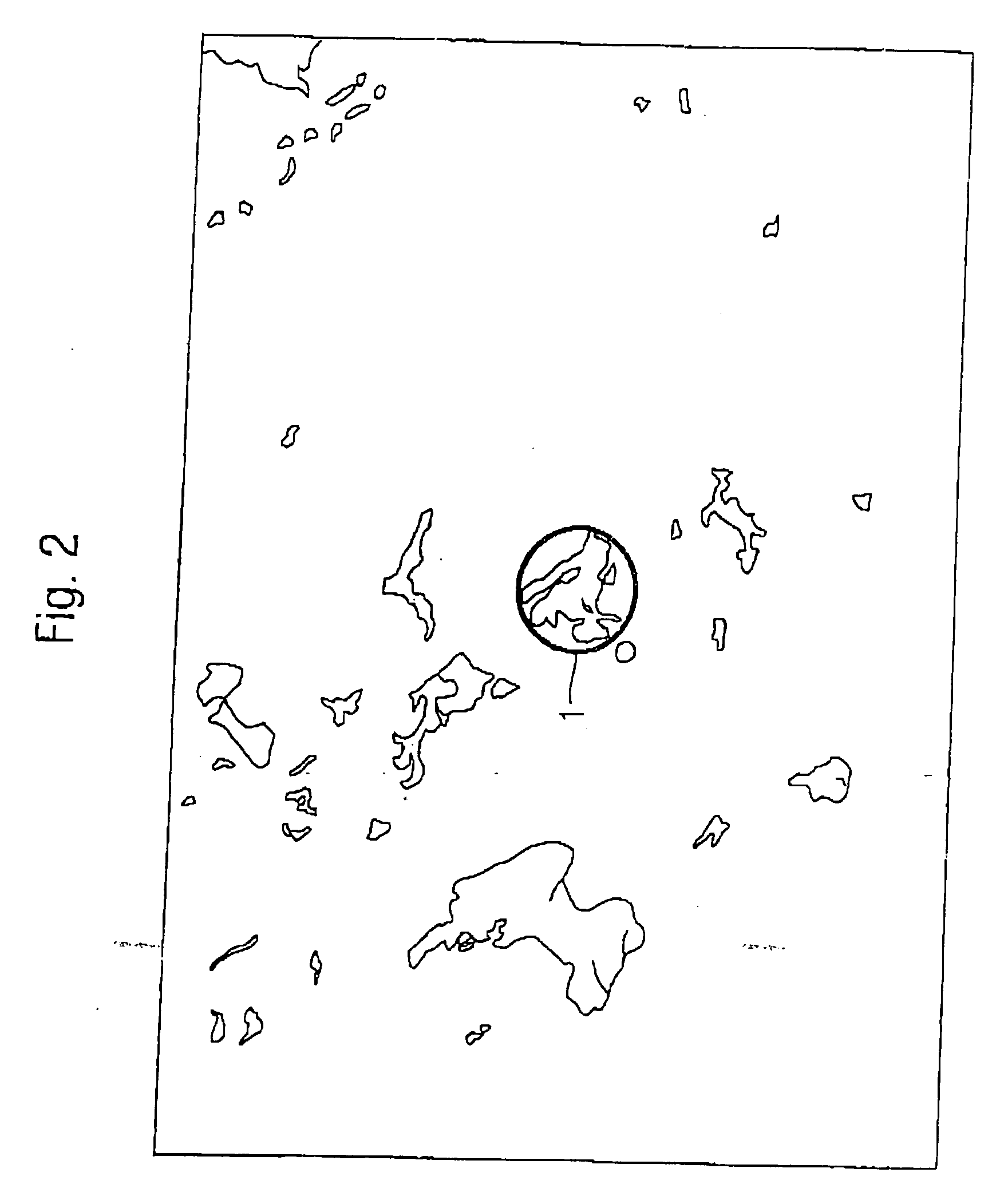Ink fountain roller of a web-fed press
a wedfed press and fountain roller technology, applied in printing presses, inking apparatus, printing, etc., can solve the problems of microcracks, strong abrasion and wear, and contaminants, especially calcium carbonate and kaolin, in the pores of the ink fountain roller, so as to improve the mechanical strength of metal components and reduce microcracks
- Summary
- Abstract
- Description
- Claims
- Application Information
AI Technical Summary
Benefits of technology
Problems solved by technology
Method used
Image
Examples
Embodiment Construction
[0034]FIG. 1 is a schematic representation of a scanning electron micrograph of a ceramic coating of the surface of an ink fountain roller at a magnification of 500×. Topographic height differences were outlined in this schematic representation. The ceramic coating consists of a mixture of chromic oxide (Cr2O3) and titanium dioxide (TiO2). The section of the ceramic surface shown here corresponds approximately to a width of 250 μm and a height of 180 μm (1 μm=10−6 μm). Depressions 1 (circumscribed area) are clearly visible on this surface, and some of them have diameters of about 20 μm. The inventors realized that undesired contaminants can accumulate in these depressions. The ink fountain roller of the invention is realized with a smoother surface.
[0035]FIG. 2 is a schematic representation of a scanning electron micrograph of a metallic spray coating of the surface of an ink fountain roller at a magnification of 500×. The dimensions of the section shown here are the same as in FIG...
PUM
| Property | Measurement | Unit |
|---|---|---|
| total surface energy | aaaaa | aaaaa |
| surface energy | aaaaa | aaaaa |
| surface energy | aaaaa | aaaaa |
Abstract
Description
Claims
Application Information
 Login to View More
Login to View More - R&D
- Intellectual Property
- Life Sciences
- Materials
- Tech Scout
- Unparalleled Data Quality
- Higher Quality Content
- 60% Fewer Hallucinations
Browse by: Latest US Patents, China's latest patents, Technical Efficacy Thesaurus, Application Domain, Technology Topic, Popular Technical Reports.
© 2025 PatSnap. All rights reserved.Legal|Privacy policy|Modern Slavery Act Transparency Statement|Sitemap|About US| Contact US: help@patsnap.com



